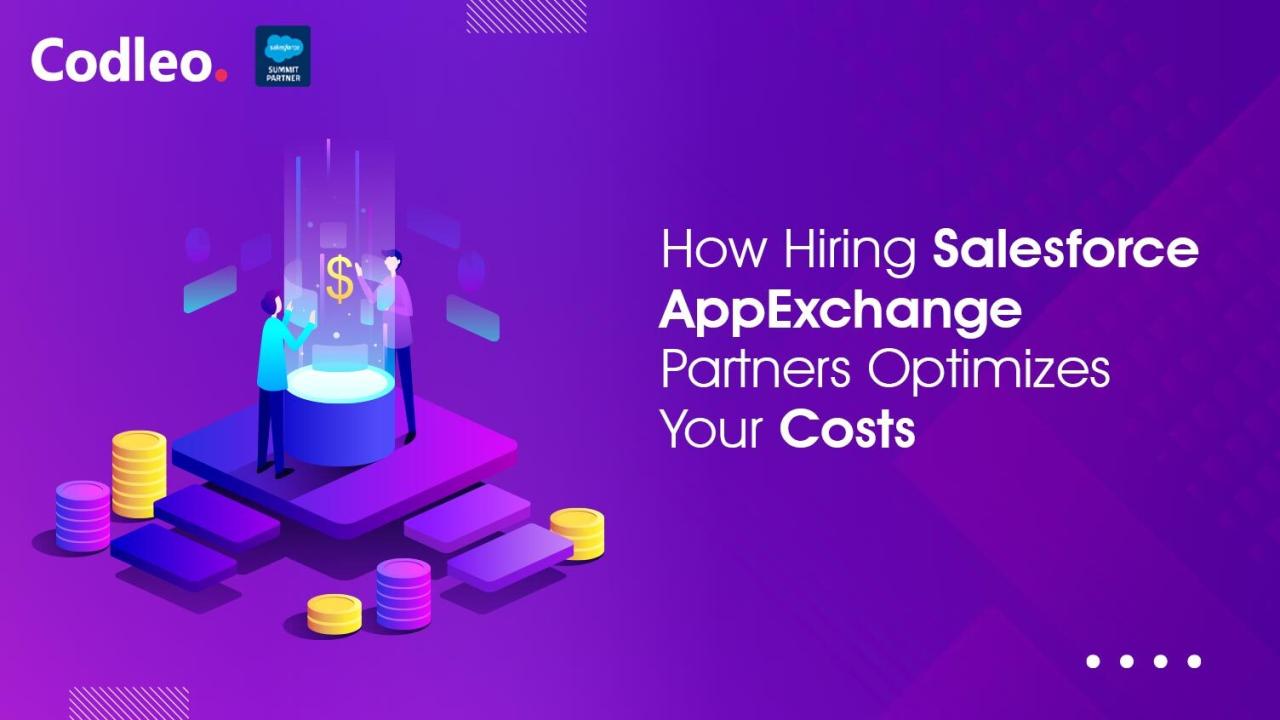Publish date:
Could your Salesforce implementation be costing your company more than anticipated? Throughout my experience as a Salesforce consultant, I've had the opportunity to assist clients with various Salesforce implementations. One recurring mistake I've observed is the tendency to underestimate the hidden costs associated with Salesforce implementation. These expenses go beyond the initial license purchase and can significantly impact the overall success of your implementation process.
In this article, I'll highlight some of the most commonly overlooked Salesforce costs. My goal is to provide businesses and decision-makers with a comprehensive understanding of the full financial implications involved in adopting Salesforce. By bringing attention to these often unnoticed expenses, your journey from the start to 'go live' can be better aligned with your budget expectations.
Cloud Extensions
After putting significant effort into selecting the right Salesforce cloud to meet your needs and budget, what's next?
You might not be aware that each Salesforce Cloud comes with multiple editions to choose from. Many customers begin with the Sales Cloud Enterprise Edition, one of Salesforce's most popular offerings.
As you start utilizing the Salesforce platform for your business operations, you'll quickly discover that many of the advanced features you seek aren't included in the standard plan. This often necessitates expanding to other clouds or apps available on the AppExchange.
For instance, if your sales team needs a more advanced quoting mechanism, you might look into CPQ, a solution within Salesforce Revenue Cloud. If you want your partners or customers to log in through a custom portal, you might consider adding Experience Cloud. Similarly, if your marketing team requires advanced segmentation, automation, and personalization, Marketing Cloud could be a valuable addition.
Other extensions might include specific solutions from the AppExchange, such as DocuSign eSignature, to streamline your customers' digital signature processes.
Incorporating these cloud extensions and app solutions can greatly enhance the functionality and adaptability of your Salesforce implementation. However, it's essential to anticipate and budget for the additional costs associated with each of these tools.
Custom Tailoring and Fine-Tuning
As you advance in your digital transformation journey, you may encounter situations where neither Salesforce’s standard offerings nor the various AppExchange apps fully address your evolving business needs.
Every organization has its own unique set of intricate processes. As a Salesforce customer, your business will likely require customized solutions that go beyond the out-of-the-box functionalities. Whether your unique requirements arise from industry-specific regulations, complex workflows, specialized reporting needs, or integration with existing legacy systems, you will soon find yourself investing in Salesforce customization, configuration, and app development.
The Salesforce platform is vast, and developing custom apps or features requires careful consideration of time, resources, and expertise. While you might attempt to handle it independently, collaborating with experienced Salesforce professionals or engaging a dedicated team is often essential for creating successful, tailored solutions.
Data Transfer and System Connectivity
Migrating data from your existing systems to Salesforce can incur significant costs. For instance, imagine your manufacturing company is migrating customer and order data from an old system to Salesforce. Due to the complexity and volume of your data, you hire a data migration specialist. This investment in time and resources is necessary to properly execute the Extract, Transform, and Load (ETL) process, which includes data cleansing using scripts or Excel formulas.
It's important to note that Salesforce Professional Edition and lower versions do not include API capabilities. Consequently, free tools like Salesforce Data Loader are insufficient for managing large, complex data migrations, requiring you to purchase an alternative solution such as dataloader.io.
When it comes to integrating Salesforce with other systems, such as your website or QuickBooks accounting software, the complexity of the integration must be considered. Fortunately, many systems offer connector apps available on the AppExchange, which can help reduce integration costs and expedite the process. If such an app is not available, you may need to explore custom integrations using point-and-click middleware like Zapier or hire a software developer to create code-based integrations.
Sustaining a Successful Salesforce Implementation
Achieving success with your Salesforce implementation is an ongoing journey, not a one-time event. As your organization evolves, updates and changes are inevitable.
Consider a retail company that recently implemented Salesforce to streamline its sales and customer management processes. Over time, the company introduces new product lines and modifies its sales strategies. Without a well-planned maintenance approach, delays in updating Salesforce to reflect these changes can lead to misalignment between the sales team and the system, causing inefficiencies and missed opportunities.
To avoid these issues, it is crucial to maintain a dedicated team of Salesforce experts, including Business Analysts, Administrators, Developers, and Architects. If your company lacks this expertise in-house, outsourcing through a platform like Modelit Bolt can be a viable solution.
By forming this team and incorporating ongoing maintenance costs into your budget, you ensure that Salesforce remains a valuable asset that continually supports your retail company’s evolving needs.
User Adoption
To maximize the benefits of Salesforce, it is essential to equip all users with the skills and knowledge needed to use the platform effectively. However, this training process adds another dimension to the overall cost consideration.
Imagine a financial services firm that acquires Salesforce for client management but does not provide adequate training for its employees. This lack of training can lead to difficulties in navigating the system, resulting in data inaccuracies and inefficient operations.
Investing in comprehensive user training or implementing a learning management system can empower your workforce to fully leverage Salesforce’s capabilities. With proper training, employees can become proficient in managing client relationships, tracking leads, and utilizing advanced reporting features, ultimately improving customer satisfaction and increasing revenue.
Summary
By acknowledging the necessity of cloud extensions, custom-tailored solutions, data transfer and integration, implementation maintenance, and user adoption in advance, and planning for each in your budget, you can minimize unexpected additional Salesforce implementation costs.
Ready to optimize your Salesforce implementation?
Partner with Codleo Consulting to ensure a seamless and cost-effective Salesforce journey. Our team of experts will guide you through every step, from initial setup to ongoing maintenance, maximizing your investment and driving your business forward. Contact us today to get started!
















